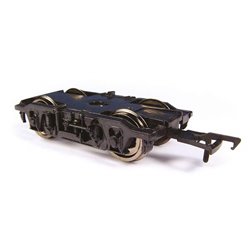Static grass and fine scatter are both commonly used in scale modelling and model railway projects to create...
No products
Product successfully added to your shopping cart
There are 0 items in your cart. There is 1 item in your cart.
Search Tips
Christmas and New Year
We are dispatching orders every weekday apart from Christmas Day, Boxing Day and New Year's Day.
If you order is time critical, select next day delivery at checkout.
The shop in Sandown is closed from 25th December, reopening on 30th December.
What is a Commonwealth bogie?
Bogies are a chassis (or framework) that carry a wheelset on a railway locomotive or rollingstock. The Commonwealth bogie was introduced in the 1950s and used on BR Mk1s and Irish CIE Park Royal coaches. The Commonwealth bogie was manufactured under licence here in the UK by the English Steel Corporation, but the original design belonged to an American company called the Commonwealth Steel Company.
The main advantage of the new Commonwealth bogie over earlier designs was the introduction of sealed roller bearings that did away with the need to keep oil box levels topped up. Another advantage was the replacement of leaf-springs with new coiled ones that gave a superior ride quality and a speed rating of 100mph.
Despite their success, commonwealth bogies were made from cast steel and weren't very light, weighing in at around 6.5 long tons they were replaced less than 10 years after production began with the much lighter B4 bogies made from fabricated steel.
Click here to receive the tips weekly in your mailbox. You can unsubscribe at any time.









